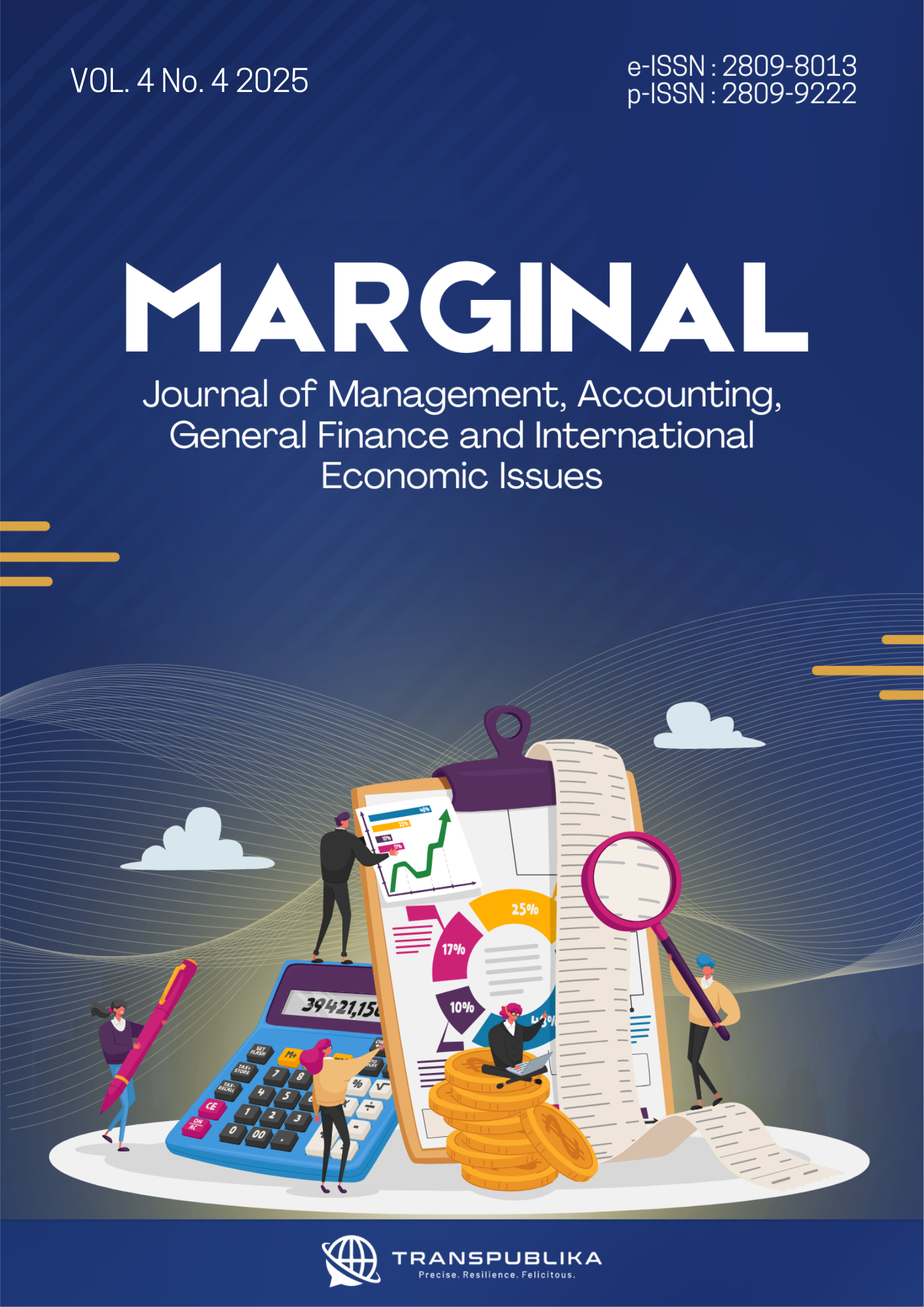The Influence of Financial Literacy and Ease of Use on Transactions Using QRIS in MSMEs in Semarang City
Main Article Content
Muhammad Rizki Maulana*
Entot Suhartono
The advancement of digital technology in payment systems has prompted micro, small, and medium-sized enterprises (MSMEs) to embrace financial technology, specifically through the implementation of the QR Code Indonesian Standard (QRIS). However, the adoption of QRIS has been inconsistent, particularly within the culinary sector of West Semarang, possibly due to varying levels of financial literacy and technological ease of use. It is disheartening to note that despite the prevalence of QRIS usage in today's society, many businesses in West Semarang have not fully embraced it. The primary objective of this research is to examine how financial literacy and the user-friendliness of QRIS impact the decision-making process of culinary MSMEs in West Semarang when it comes to adopting QRIS, both individually and collectively. Utilising a quantitative approach, the study employs the snowball sampling technique to gather data from 95 participants, following the guidelines set out in the Isaac and Michael Table. The survey used in this study was a Likert scale questionnaire. Various statistical methods including multiple linear regression, t test, F test, and coefficient of determination were employed for data analysis. Findings revealed that both financial literacy and the user-friendliness of QRIS had a significant impact on the adoption of the digital payment system. This suggests that businesses are more inclined to use QRIS when they have a strong understanding of financial concepts and find QRIS easy to use. The research highlights the significance of educating individuals on financial literacy and enhancing accessibility to intermediary services.
Alifia, N., Permana, E., & Harnovinsah. (2024). Analisis Penggunaan QRIS Terhadap Peningkatan Pendapatan UMKM. Jurnal Riset Pendidikan Ekonomi, 9(1), 102–115.
Amna, A. R. & H. I. (2017). Analisis Penerimaan User Sistem Informasi Akutansi Menggunakan Model Unified Theory of Acceptance And Use Of Technology (UTAUT). Generation Journal, 1(2), 72–79.
Bank IDN. (2020). Quick Response Code Indonesian Standard (QRIS). Bank Indonesia.
BI, B. indonesia. (2023). jumlah pengguna QRIS pada UMKM Indonesia. Departemen Komunikasi.
Ghozali, I. (2018). Aplikasi analisis multivariete dengan program IBM SPSS 23.
Herlina, E., Tukiran, M., & Anwar, S. (2021). The Effect Of Entrepreneurial Leadership On Organizational Performance: Literature Review. Journal Of Management, Accounting, General Finance And International Economic Issues, 1(1), 25–33. https://doi.org/10.55047/marginal.v1i1.9
Irawati. (2024). Jumlah pengguna QRIS Indonesia. Infobanknews.Com.
Junaidi. (2010a). Titik Persentase Distribusi t. Http://Junaidichaniago.Wordpress.Com, 1–6.
Junaidi, C. (2010b). Titik Persentase Distribusi F. 0–5.
Kusuma, S. P. (2023). Pengaruh Literasi Keuangan, Kemudahan Dan Kepercayaan Terhadap Keputusan Bertransaksi Menggunakan Qris Pada Umkm Di Kota semarang. 16(2), 356–364. https://doi.org/10.51903/e-bisnis.v16i2.1259
OJK. (2022). pengertian Literasi Keuangan. Otoritas Jasa Keuangan.
Palupi, A. A., Hartati, T., & Sofa, N. (2022). Pengaruh Literasi Keuangan dan Kemudahan Penggunaan QRIS Terhadap Keputusan Bertransaksi Menggunakan QRIS Pada UMKM. 67–75.
Putri, M. T., Hatta, A. J., & Indraswono, C. (2023). Analisis Persepsi Kemanfaatan, Persepsi Kemudahan, Kepercayaan, Gaya Hidup, Literasi Keuangan, Dan Risiko Terhadap Penggunaan Qris Sebagai Alat Pembayaran Digital Pada Mahasiswa Di Yogyakarta. Jurnal Ekonomi Dan Bisnis, 17(3), 215–228. https://doi.org/10.53916/jeb.v17i3.73
Rachmayani, A. N. (2024). survei literasi keuangan otoritas jasa keuangan(OJK). 6.
Safira, M. E., & Susanti, S. (2020). Pengaruh Literasi Keuangan, Promosi Uang Elektronik, dan Kemudahan Penggunaan terhadap Keputusan Penggunaan Uang Elektronik. JPEKA: Jurnal Pendidikan Ekonomi, Manajemen Dan Keuangan, 4(2), 97–112. https://doi.org/10.26740/jpeka.v4n2.p97-112
Semarang, P. (2024). Data Jumlah UMKM Kota Semarang. IUMK SEMARANG.
Sugiyono. (2017). Metode Penelitian Kuantitatif, Kualitatif, dan R&D. Alfabeta.
Venkatesh, V., Thong, J. Y. L., & Xu, X. (2012). UTAUT2; Unified theory of acceptance and use of technology. MIS Quarterly, 36(1), 157–178.
Widhiaswara, I. A., & Soesanto, H. (2020). Analisis Pengaruh Persepsi Manfaat, Persepsi Kemudahan Penggunaan dan Persepsi Risiko Terhadap Keputusan Pembelian dengan Kepercayaan Sebagai Variabel Intervening (Studi Pada Konsumen Gofood di Kota Semarang). Jurnal Sains Pemasaran Indonesia (Indonesian Journal of Marketing Science), 19(2), 114–125. https://doi.org/10.14710/jspi.v19i2.114-125
Zanra, S., & Sufnirayanti, S. (2024). Pengaruh Persepsi Kemudahan, Lingkungan Sosial dan Literasi Keuangan terhadap Minat Penggunaan QRIS. Jurnal Akuntansi, Keuangan, Dan Manajemen, 5(3), 177–192. https://doi.org/10.35912/jakman.v5i3.3122




















